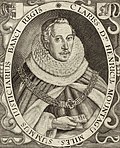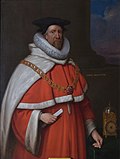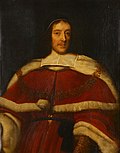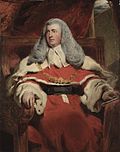| Portrait | Lord chief justice | From | Until | Notes |
|---|
| William de Raley | 1234 | 1239 | |
| Sir Stephen de Segrave | 1239 | 1241 | |
| William of York | 1241 | 1247 | |
| Henry of Bath | 1249 | 1251 | |
| Sir Gilbert of Seagrave | 1251 | 1253 | |
| Henry of Bath | 1253 | 1260 | |
| Sir William of Wilton | 1261 | 1263 | |
| Nicholas de Turri | 1265 | 1267 | |
| Sir Robert de Briwes | 1268 | 6 November 1269 | |
| Richard of Staines | 6 November 1269 | 1273 | |
| Martin of Littlebury | 1273 | 1274 | |
 | Ralph de Hengham | 1274 | 1290 | |
| Gilbert de Thornton | 1290 | 1296 | |
| Sir Roger Brabazon | 1296 | March 1316 | |
| Sir William Inge | March 1316 | 15 June 1317 | |
| Sir Henry le Scrope | 15 June 1317 | September 1323 | |
| Hervey de Stanton | September 1323 | 21 March 1324 | |
| Sir Geoffrey le Scrope | 21 March 1324 | 1 May 1329 | |
| Sir Robert de Malberthorp | 1 May 1329 | 28 October 1329 | |
| Sir Henry le Scrope | 28 October 1329 | 19 December 1330 | |
| Sir Geoffrey le Scrope | 19 December 1330 | 28 March 1332 | |
| Sir Richard de Willoughby | 28 March 1332 | 20 September 1332 | |
| Sir Geoffrey le Scrope | 20 September 1332 | 10 September 1333 | |
| Sir Richard de Willoughby | 10 September 1333 | 1337 | |
| Sir Geoffrey le Scrope | 1337 | October 1338 | |
| Sir Richard de Willoughby | October 1338 | 21 July 1340 | |
| Sir Robert Parning | 21 July 1340 | 8 January 1341 | |
| Sir William Scott | 8 January 1341 | 26 November 1346 | |
| Sir William de Thorpe | 26 November 1346 | 26 October 1350 | |
| Sir William de Shareshull | 26 October 1350 | 24 May 1361 | |
| Sir Henry Green | 24 May 1361 | 29 October 1365 | |
| Sir John Knyvet | 29 October 1365 | 15 July 1372 | |
| Sir John de Cavendish | 15 July 1372 | 14 June 1381 | Murdered in the Peasants' Revolt |
| Sir Robert Tresilian | 22 June 1381 | 17 November 1387 | |
| Sir Walter Clopton | 31 January 1388 | 21 October 1400 | |
| Sir William Gascoigne | 15 November 1400 | 29 March 1413 | |
| Sir William Hankford | 29 March 1413 | 12 December 1423 | |
| Sir William Cheyne | 21 January 1424 | 20 January 1439 | |
| Sir John Juyn | 20 January 1439 | 24 March 1440 | |
| Sir John Hody | 13 April 1440 | 25 January 1442 | |
 | Sir John Fortescue | 25 January 1442 | 13 May 1461 | |
| Sir John Markham | 13 May 1461 | 23 January 1469 | |
| Sir Thomas Billing | 23 January 1469 | 5 May 1481 | |
| Sir William Hussey | 7 May 1481 | 8 September 1495 | |
| Sir John Fineux | 24 November 1495 | 23 January 1526 | |
| Sir John FitzJames | 23 January 1526 | 21 January 1539 | |
 | Sir Edward Montagu | 21 January 1539 | 9 November 1545 | |
| Sir Richard Lyster | 9 November 1545 | 21 March 1552 | |
| Sir Roger Cholmeley | 21 March 1552 | 4 October 1553 | |
 | Sir Thomas Bromley | 4 October 1553 | 11 June 1555 | |
| Sir William Portman | 11 June 1555 | 8 May 1557 | |
| Sir Edward Saunders | 8 May 1557 | 22 January 1559 | |
| Sir Robert Catlyn | 22 January 1559 | 8 November 1574 | |
 | Sir Christopher Wray | 8 November 1574 | 2 June 1592 | |
 | Sir John Popham | 2 June 1592 | 25 June 1607 | |
 | Sir Thomas Fleming | 25 June 1607 | 25 October 1613 | |
 | Sir Edward Coke | 25 October 1613 | 16 November 1616 | |
 | Sir Henry Montagu | 16 November 1616 | 29 January 1621 | |
 | Sir James Ley | 29 January 1621 | 26 January 1625 | |
 | Sir Ranulph Crewe | 26 January 1625 | 5 February 1627 | |
 | Sir Nicholas Hyde | 5 February 1627 | 24 October 1631 | |
 | Sir Thomas Richardson | 24 October 1631 | 4 February 1635† | Died in office |
 | Sir John Bramston | 14 April 1635 | 31 October 1642 | |
 | Sir Robert Heath | 31 October 1642 | October 1645 | |
 | Sir Henry Rolle | 12 October 1648 | 15 June 1655 | |
 | John Glynne | 15 June 1655 | 17 January 1660 | Knighted in 1660 |
| Sir Richard Newdigate | 17 January 1660 | 1 October 1660 | |
| Sir Robert Foster | 21 October 1660 | 4 October 1663† | First Chief Justice after the Restoration; died in office |
 | Sir Robert Hyde | 19 October 1663 | 1 May 1665† | Died in office |
 | Sir John Kelynge | 21 November 1665 | 9 May 1671† | Died in office |
 | Sir Matthew Hale | 18 May 1671 | 20 February 1676 | Formerly Lord Chief Baron of the Exchequer 1660–1671 |
 | Sir Richard Raynsford | 12 April 1676 | 31 May 1678 | |
 | Sir William Scroggs | 31 May 1678 | 11 April 1681 | |
 | Sir Francis Pemberton | 11 April 1681 | 1682 | Later Chief Justice of the Common Pleas in 1683 |
|
| Sir Edmund Saunders | 23 January 1683 | 19 June 1683 | Died in office |
 | Sir George Jeffreys
(Baron Jeffreys from 1685) | 28 September 1683 | 23 October 1685 | Lord Chancellor 1685–1688 |
| Sir Edward Herbert | 23 October 1685 | 22 April 1687 | Later Chief Justice of the Common Pleas 1687–1689 |
 | Sir Robert Wright | 22 April 1687 | 17 April 1689 | Briefly Chief Justice of the Common Pleas in April 1687 |
 | Sir John Holt | 17 April 1689 | 5 March 1710† | Died in office |
 | Sir Thomas Parker
(Lord Parker from 1714) | 11 March 1710 | 15 May 1718 | Regent of Great Britain from 1 August to 18 September 1714; later Lord Chancellor 1718–1725, created Earl of Macclesfield in 1721; impeached for corruption in 1725 |
 | Sir John Pratt | 15 May 1718 | 24 February 1725 | Interim Chancellor of the Exchequer in 1721 |
 | Sir Robert Raymond
(Baron Raymond from 1731) | 2 March 1725 | 31 October 1733† | Previously Attorney General 1720–1724; died in office |
 | Philip Yorke, 1st Baron Hardwicke | 31 October 1733 | 8 June 1737 | Previously Attorney General 1724–1733; later Lord Chancellor 1737–1756 and created Earl of Hardwicke in 1754 |
 | Sir William Lee | 8 June 1737 | 8 April 1754† | Interim Chancellor of the Exchequer in 1754; died in office |
 | Sir Dudley Ryder | 2 May 1754 | 25 May 1756† | Previously Attorney General 1737–1754; died in office |
 | William Murray, 1st Baron Mansfield
(Earl of Mansfield from 1776) | 8 November 1756 | 4 June 1788 | Previously Attorney General 1754–1756; Lord Speaker in 1783 |
 | Lloyd Kenyon, 1st Baron Kenyon | 4 June 1788 | 4 April 1802† | Previously Attorney General 1782–1783 1783–1784 and Master of the Rolls 1784–1788; died in office |
 | Edward Law, 1st Baron Ellenborough | 11 April 1802 | 2 November 1818 | Previously Attorney General 1801–1802; interim Chancellor of the Exchequer in 1806 |
 | Sir Charles Abbott
(Baron Tenterden from 1827) | 2 November 1818 | 4 November 1832† | Interim Chancellor of the Exchequer in 1827; died in office |
 | Sir Thomas Denman
(Baron Denman from 1834) | 4 November 1832 | 5 March 1850 | Previously Attorney General 1830–1832; interim Chancellor of the Exchequer in 1834 |
 | John Campbell, 1st Baron Campbell | 5 March 1850 | 24 June 1859 | Previously Attorney General 1834 and 1835–1841; briefly Lord Chancellor of Ireland in 1841; later Lord Chancellor 1859–1861 |
 | Sir Alexander Cockburn, 12th Baronet | 24 June 1859 | 20 November 1880† | Previously Attorney General 1851–1852, 1852–1856 and Chief Justice of the Common Pleas 1856–1859; Courts of the Queen's Bench, Common Pleas, and Exchequer became divisions of a unified High Court in 1875; died in office |























































